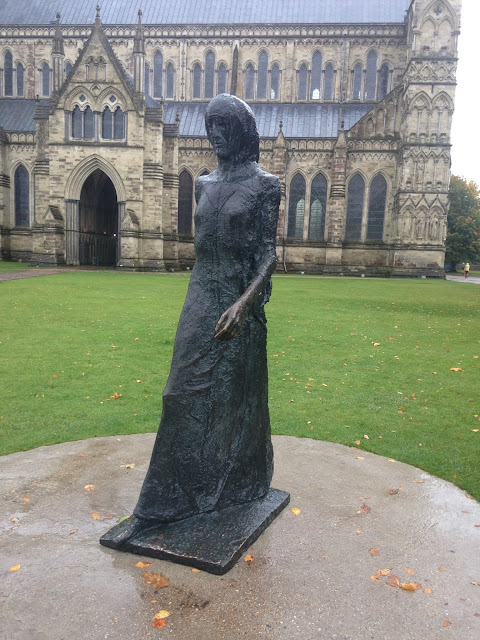When I went to Hastings earlier this year I resolved to find a way to return there in an employed capacity. Lo and behold, I was asked to curate an exhibition at Jerwood Gallery, featuring work from the Ingram and Jerwood Collections of Modern British Art. The show, which begins in October 2016, is tentatively entitled 'Century', and it will feature (approximately) 100 works covering a period of (approximately!) 100 years.
There won't be 100 different artists, though. While the collections are fairly eclectic there are particular artists who feature prominently in one or both, so inevitably there will be a bias in their favour. I think we will end up with a vision of 20th century British painting and sculpture that might surprise some people, that is if I don't go crazy trying to whittle down my 'long list'.
One highlight will be Elizabeth Frink's 'Walking Madonna', which stands two metres tall but seems more imposing than that statistic suggests. Of only three cast, one stands at Chatsworth House and another at Salisbury Cathedral. The third is owned by the Ingram Collection.
I was passing through Salisbury last month and stopped to visit the Cathedral, a building I had seen from the ring road countless times but hadn't actually visited in years. My main aim was to look at the engraved prism made by Laurence Whistler to commemorate his brother Rex. I'd forgotten about the Walking Madonna and so came upon the sculpture unawares. Hard to imagine another work of art that would fit in that environment, but this one certainly does.
It has been in situ since 1981, when the Dean of Salisbury Cathedral wrote to his parishioners to warn them of its imminent arrival. He wrote:
This figure symbolises ... human dignity and creativity over militarism and totalitarian disregard for human dignity and rights.
Something similar could be said today.



No comments:
Post a Comment